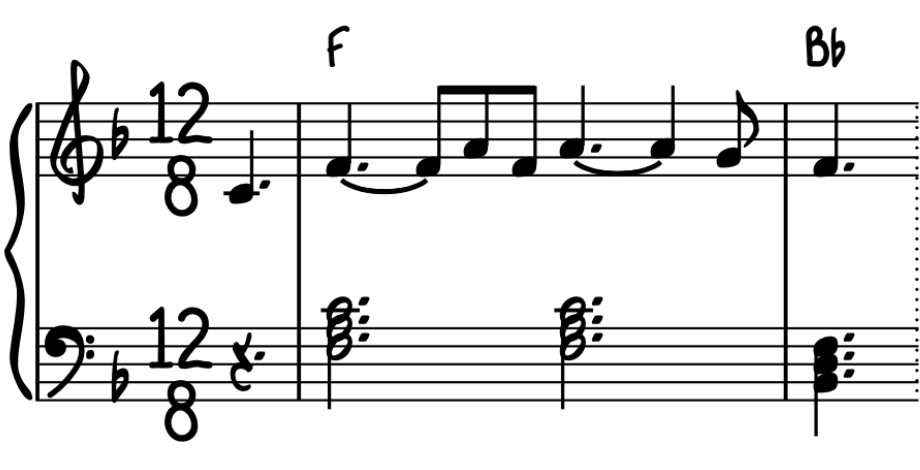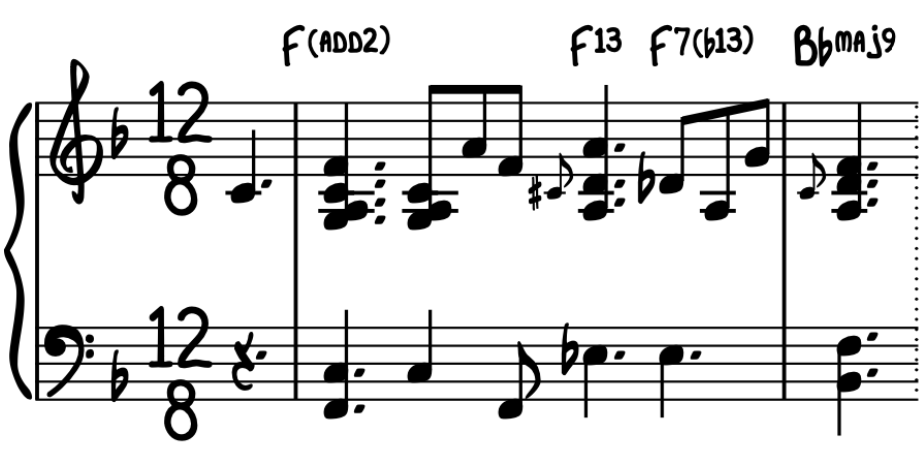3 Steps To Make Your Piano Chords More Interesting
Learning Focus
Music Style
Free Lessons
Get free weekly lessons, practice tips, and downloadable resources to your inbox!
One of the most common questions that piano students often ask is, “How can I make my chords sound more interesting?” Well, in today’s Quick Tip, 3 Steps To Make Your Piano Chords More Interesting, Jonny May shares actionable tips that you can use right away to transform your playing. You’ll learn:
Introduction
Perhaps you’re dissatisfied with the way your piano playing sounds. If so, you’re not alone. Piano students of all ages can become detached and disheartened at various times in their learning journey. However, in my experience as a piano educator, I’ve found that adult beginners in particular are most prone to discouragement. I’ve concluded this is because adult students have refined musical tastes that have been acculturated over decades of music listening and enjoyment. As a result, adults can more quickly distinguish between amateur and professional musicianship. This inevitably leads them to prematurely evaluate their own playing as inferior, resulting in frustration and discouragement. By contrast, young students are much more easily impressed by their own fledgling abilities, especially if they excel in comparison to their peers.
Despite whatever propensity that adult piano students may have toward discouragement in music practice, they also have several significant advantages worth mentioning. For instance, adults have a greater capacity to identify structures and patterns, which are abundant in the study of music. Moreover, adult students typically have longer attention spans and are more patient problem solvers. As a result, adult students actually have an uncanny ability to make rapid progress—so long as they don’t lose heart! In fact, in today’s lesson, you’ll discover 3 simple ways to start playing better sounding chords immediately. These are pro tips that you can use in virtually any style of contemporary music.
In the next section, we’ll preview the potential impact that “better chords” can make in your playing. Afterward, we’ll show you how you can do it too!
Boring Chords vs. Interesting Chords
In today’s lesson, Jonny uses one of the most recognizable tunes in the English language, “Amazing Grace,” to demonstrate the impact that chord complexity has on the overall impact of a performance.
The following excerpts feature the exact same melody, albeit with different chords. For starters, the first excerpt is accompanied with basic piano chords only. By contrast, the second example uses much more interesting piano chords. Frankly, the difference is striking…
Which version would you prefer to play? I think most listeners would prefer to hear the latter. However, here’s something interesting that you might not realize. Many professionals who play popular tunes like “Amazing Grace” with a professional touch like the latter example are not reading from sheet music. Or even more surprisingly, if they are reading sheet music, they are often adding embellishments to a more basic arrangement of the song. In other words, a well-versed pianist can look at the sheet music for the first example and play with the sound of the second example! In fact, that’s what today’s lesson is all about!
Starting Point: “Amazing Grace” with Basic Chords
All professional piano arrangements begin with a foundational understanding of a song’s melody and harmony. Therefore, we’ll begin with a simple analysis of “Amazing Grace” in the key of F major. Note, throughout this lesson we’ll examine “Amazing Grace” in 12/8 meter, which has a more contemporary rhythmic feel. However, if you’d prefer to learn the tune in the more traditional 3/4 meter instead, then you may prefer our Amazing Grace Gospel Style Quick Tip by John Proulx.
By the way, PWJ members can download the complete PDF for today’s tutorial from the bottom of this page after logging in with their membership. In addition, members can also transpose the notated examples to any key using our Smart Sheet Music.
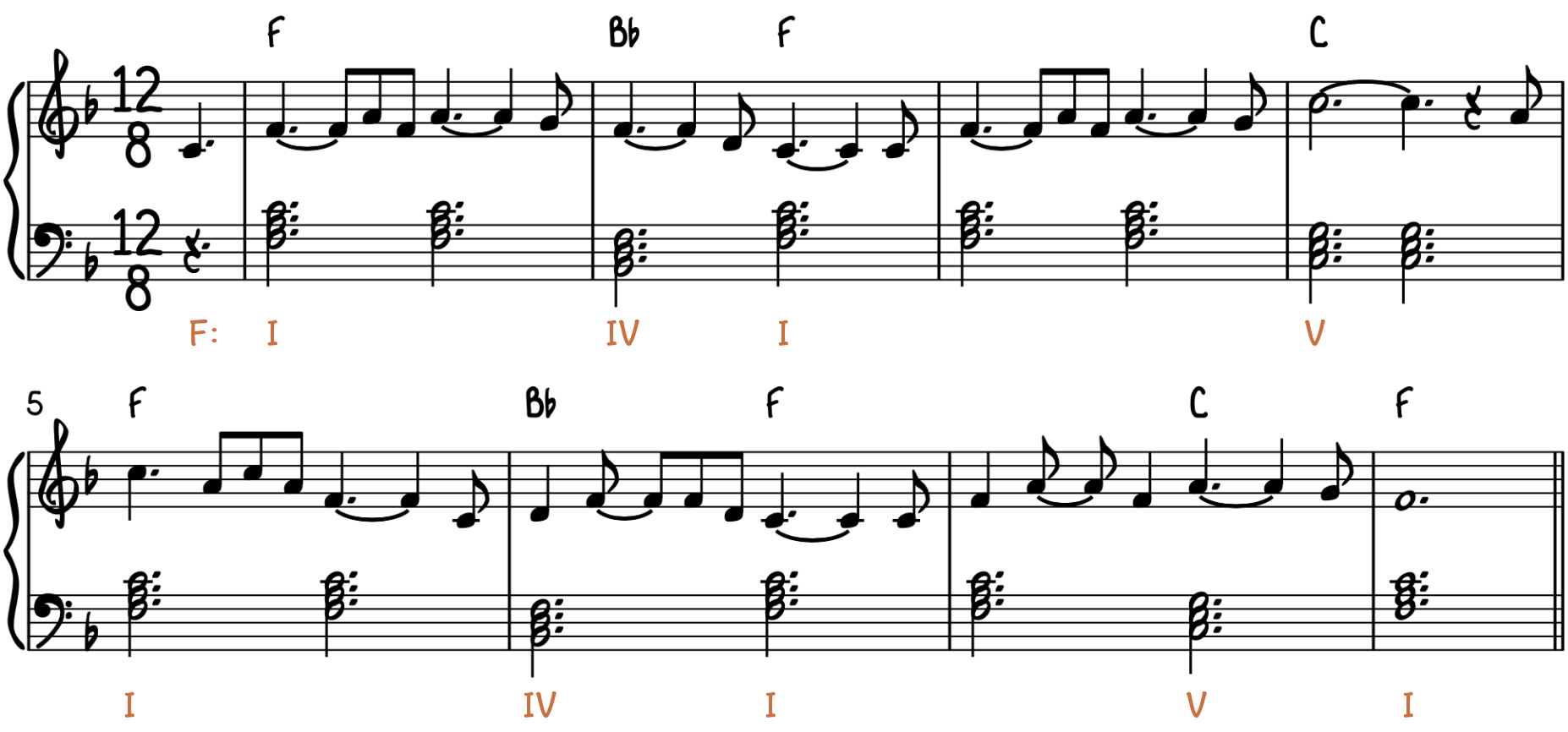
Incidentally, “Amazing Grace” is usually attributed to English Anglican clergyman and hymn writer John Newton, who did in fact pen the lyrics in 1772.¹ However, the modern melody as we now know it was a preexisting folk tune entitled “New Britain.” In 1835, American Baptist song leader William Walker compiled and published Southern Harmony, a collection of congregational songs in which Newton’s lyrics first appeared with the now familiar tune.²
Did you notice the Roman numerals in the example above? These annotations present a harmonic analysis (aka functional analysis) of each chord with respect to the parent key of F major. Thus, Ⅰ represents the 1-chord (F major), Ⅳ represents the 4-chord (B♭ major), and Ⅴ represents the 5-chord (C major). To learn more about harmonic analysis, check out the following course:
🔎 Jazz Standard Analysis (Int, Adv)
Once you have a broad understanding of the melodic and harmonic structure of a song, you can begin personalizing the tune to make the chords more interesting.
How to Make Piano Chords Sound More Interesting
There are several ways that seasoned pianists embellish their chords to make them sound more interesting. For starters, there are two fairly logical approaches:
- Add more notes to the existing chords
- Add more chords to the existing progressions
Many listeners can detect such logical chord adaptations, even if they lack language to adequately describe them. Consider again the side-by-side excerpts of “Amazing Grace” from the opening of today’s lesson. Do you see evidence of both of these principles at work in the second excerpt? In addition to the two adaptations listed above, we’ll also explore additional possibilities in today’s lesson, which we’ll simply call “pro chord embellishments” for now. This category involves a blend of professional touches and techniques that pro pianists add at will.
For a deep dive on how to create breathtaking chord transformations, be sure to check out our full-length course below on this topic:
🔎 Passing Chords and Reharmonization (Int, Adv)
Are you ready to explore some interesting chord transformations? If so, then proceed to Step 1.
Step 1: Add Passing Chords
In Step 1 of today’s lesson, Jonny May shows piano students how to level up their playing by adding extra chords to the existing chord progressions. In music theory, we call these extra chords passing chords.
What are passing chords?
In music theory, passing chords are chords that an arranger or performer adds to an existing composition to make it sound more interesting. Thus, passing chord are nonessential to the harmonic structure, but they contribute significantly to the enjoyment of it—sort of like stopping for an ice cream cone while you’re out running errands.
Amazing Grace with Passing Chords
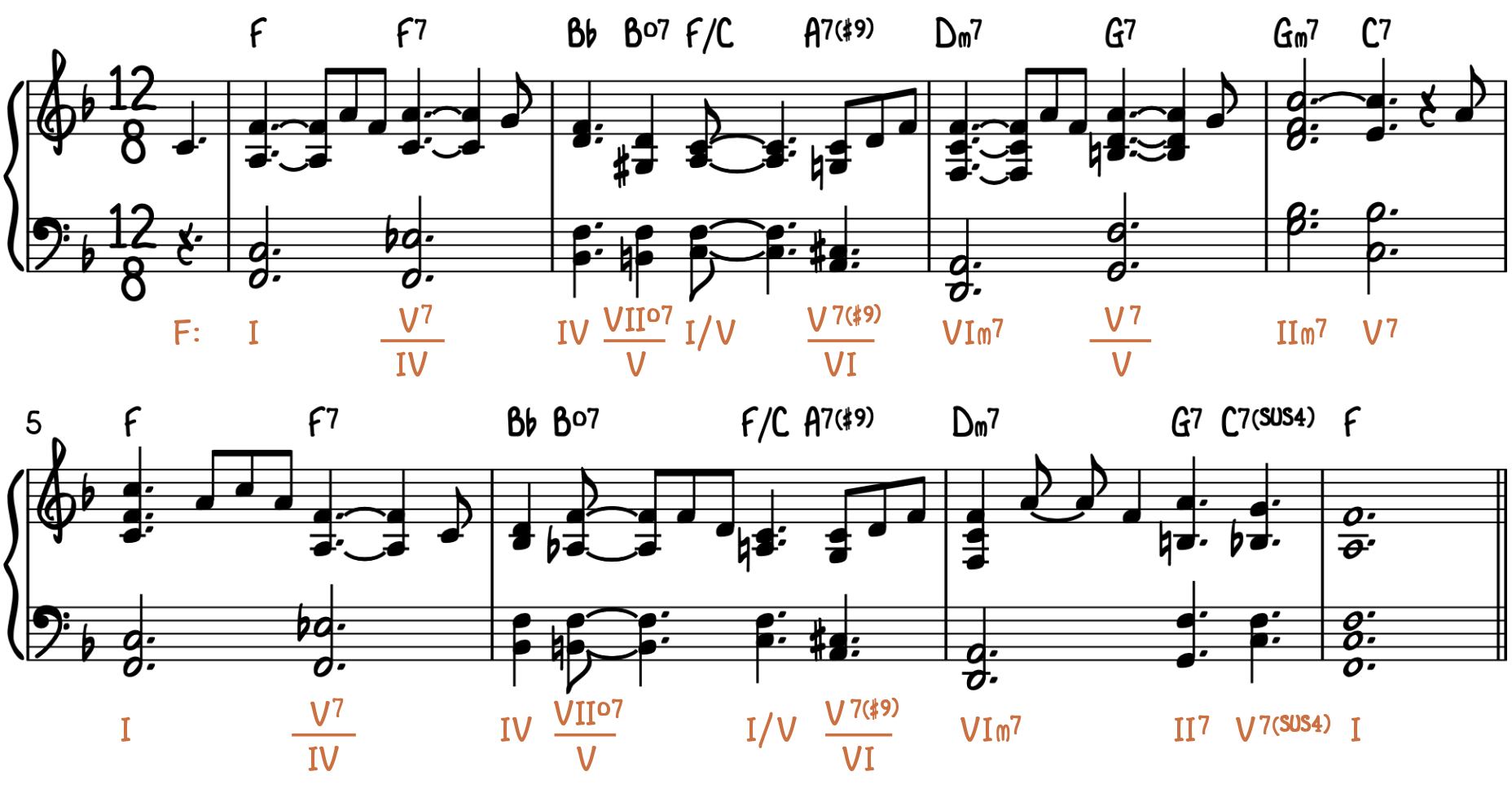
Wow, how did Jonny do that? To be sure, it involves a bit of music theory, but with a little practice, you can get it.
To help you understand these passing chords, observe the following:
- The extra chords involve accidentals (i.e.: sharps ♯, flats ♭, or naturals ♮)
- The chords after the extra chords are regular chords in the parent key
These observations are both profoundly important. If you were to try to add extra chords using only regular chords from the key signature (aka diatonic chords), you wouldn’t be able to get these results.
To achieve the sound that Jonny has modeled in Step 1, you have to import chords from outside of the parent key. However, the secret is to select chords that naturally resolve to chords within the key. For example, in measure 1, Jonny adds F7, which is foreign to F major. However, F7 resolves to the B♭ major chord in measure 2. Moreover, F7 has a strong harmonic relationship to B♭ major—indeed, it is the Ⅴ7 chord in the key B♭ major. Therefore, we call this F7 a secondary dominant. Specifically, it is the Ⅴ7/Ⅳ (pronounced “five-seven of four”).
If you’ve never heard secondary dominants before, I can assure you that the natural response for students’ first exposure is always the same…“Say what?” 🫤 Take a deep breath and re-read the paragraph above. It just might make more sense the second time. Then, if you still need a more thorough examination of this topic, check out this helpful resource on secondary dominants.
The other examples of passing chords that Jonny uses in this example are secondary diminished chords, which operate according to similar principles.
Step 2: Add Chord Thickeners
Another way that seasoned players make their piano chords sound more interesting is by thickening them up with extra notes. For example, instead of playing three-note triads, they may substitute four-note seventh chords instead. In some genres, pianists are even known to play five or more notes per chord!
Let’s take a listen to how “Amazing Grace” sounds with Jonny’s added “chord thickeners.”
Amazing Grace with Chord Thickeners
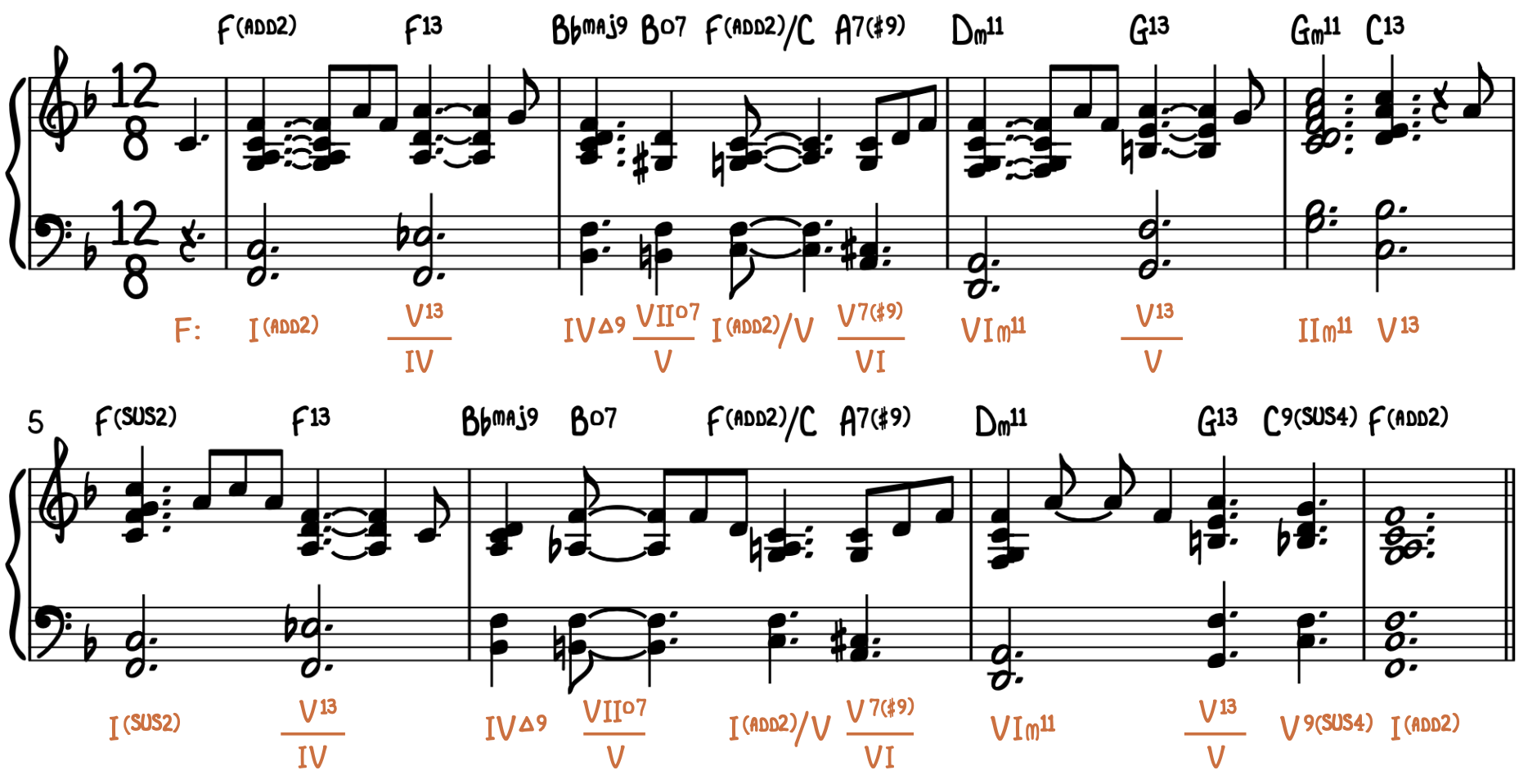
Wow, now that sounds interesting! Which raises an important question…
Which notes can be added to a basic triad to make it sound more interesting?
Learning which notes can be added to each chord type requires patience. Honesty, there is no true short cut for mastering harmony. However, we have published a helpful Chart of Available Chord Extensions by Chord Type which summarizes this information. In fact, harmonic understanding is an expansive skill set that piano students continue developing throughout their playing career. Generally speaking, the learning progression is as follows:
Beginner
- triads
- triad inversions
Late Beginner
- sus chords
- add2 chords
Early Intermediate
- seventh chords
- sixth chords
Intermediate
- chord extensions
- chord alterations
Beyond these foundations, advanced pianists employ various chord voicing techniques to achieve more specialized harmonic sounds.
Ultimately, pianists learn how to make their chords sound more modern and appealing by testing different possibilities within a musical context in the same way that you might try on different outfits for a particular occasion. Listening and imitation are also critical activities in developing harmonic proficiency. The good news is that by engaging with today’s lesson examples, you are already developing your harmonic instincts!
If you have no experience or limited experience adding notes to chords, then you’ll find the following Quick Tip to be helpful and inspiring:
🔎 Piano Chord Colors–3 Levels from Beginner to Pro
If you’re ready for a comprehensive study on which notes can be added to virtually any chord, then check out following courses to take your playing to the next level:
Step 3: Add Pro Chord Embellishments
In Step 3 of today’s piano tutorial, Jonny demonstrates an array of additional pro chord embellishments that contribute further interesting chord colors and textures. Let’s start by taking a listen…
Amazing Grace with Pro Embellishments
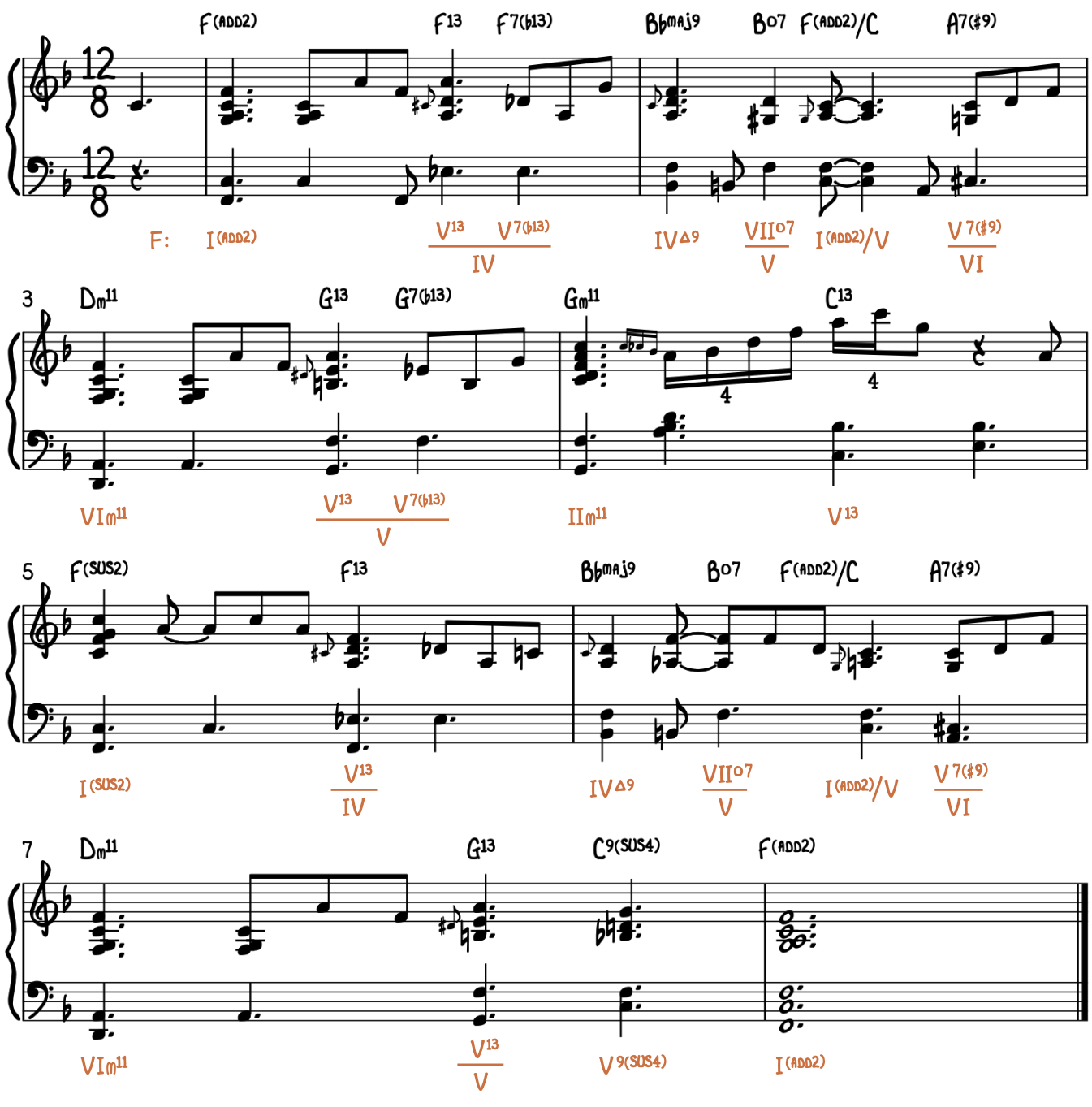
As you can hear, Jonny has deliberately added plenty of professional touches to this arrangement of “Amazing Grace.” But how are we to make sense of all these embellishments? Well, there are at least four identifiable chord techniques that Jonny is using to make this Step 3 arrangement even more interesting than the version presented in Step 2:
- Slides
- Slip Notes
- Inner Voice Movement
- Rootless Voicings
Let’s examine each of these techniques one at a time.
#1: Slides
A slide (also finger slide or blues slide) is an ornamental articulation that pianists use to add a “twang” or pitch bend effect to the attack of a piano chord in blues, jazz, R&B, neo soul and gospel music. To play a slide, a pianist literally slides their finger from a black key to the adjacent white key immediately above it or below it. Thus, all slides involve half-step movement. In notation form, slides are written with a smaller notehead, similar to grace notes in classical music. [learn more]
➢ Examples of slides appear in Jonny’s Step 3 arrangement of “Amazing Grace” in measures 1, 3, 5 and 7.
#2: Slip Notes
Slip notes (aka diatonic slides or whole tone slurs) are quite similar to slides in that they add a bit of “twang” or “sparkle” to the attack of a piano chord. However, the term slip note is reserved specifically for examples in which the ornament involves whole step movement and is played with two fingers. Consequently, slip notes are not quite as bluesy sounding as slides. In notation form, slip notes (and slides) are written with a smaller notehead, similar to grace notes in classical music. In most cases, slip notes do not require an accidental. [learn more]
➢ Examples of slip notes appear in Jonny’s Step 3 arrangement of “Amazing Grace” in measures 2 and 6.
#3: Inner Voice Movement
Inner voice moment is a technique in which a pianist makes their chords more interesting by creating countermelodies in the “inner voices.” For instance, if you imagine your piano part is an SATB choir (soprano–alto–tenor–bass), then inner voice movement seeks to create counter melodies in the alto and tenor parts. One the most accessible ways to create inner voice movement is with a 4-3 suspension in an inner voice. Inner voice moment is especially common on dominant chords, and usually involves one or more of the following melodic behaviors: 9→♭9, 13→♭13, 13→5, 5→♯11, or 5→♭13. [learn more]
➢ Examples of inner voice movement appear in Jonny’s Step 3 arrangement of “Amazing Grace” in measures 1, 3, and 4.
#4: Rootless Voicings
Rootless voicings are a specialized harmonic approach for piano that places chords in the middle register to create beautifully interesting and complex harmonic colors. Rootless voicings are generally played with one hand, and (as the name implies) they do not contain the root of the chord. The absence of the root enables the pianist’s hand to more easily include other color notes instead, such as extensions (9th, 11th, 13th) and alterations (♭9, ♯9, ♯ 11, ♭13). [learn more]
➢ An example of a rootless voicing appears in Jonny’s Step 3 arrangement of “Amazing Grace” on beat 2 of measure 4.
Conclusion
Congratulations, you’ve completed today’s lesson on 3 Steps To Make Your Piano Chords More Interesting. Now you’re ready to apply these techniques to existing songs that you already know to see if you can make the chords sound more interesting.
If you enjoyed today’s lesson, then be sure to check out the following PWJ resources:
Courses
Quick Tips
- Chord Extensions – The Complete Guide (Int)
- Rootless Voicings for Piano: The Complete Guide (Int)
- Create Inner Voice Movement for Jazz Piano (Int)
- 3 Steps to Play Piano Chord Clusters (Int)
- 4 Steps to Play Neo Soul Chords on Piano (Level 2)
- Sus Chords for Piano: The Ultimate Guide (Int)
- Piano Color Chords – 3 Levels from Beginner to Pro
Piano Foundations Learning Tracks
Theory & Analysis Learning Tracks
Thanks for learning with us today! We’ll see you next time.
Would you like to comment on this lesson?
Visit this Quick Tip on YouTube
¹ Hansen, Liane. “‘Amazing Grace.’” NPR, 29 Dec. 2002.
² “New Britain.” Hymnary.org.
 Writer
Writer
Michael LaDisa
Michael LaDisa graduated from the University of North Texas with a major in Music Theory & Composition. He lives in Chicago where he operates a private teaching studio and performs regularly as a solo pianist. His educational work with students has been featured on WGN-TV Evening News, Fox 32 Good Day,...
More Free Lessons
Alma Deutscher shows us how to improvise a beautiful piano piece with just 4 notes randomly chosen from a hat.
Jacob Collier just played Stride Piano unlike anything I've heard, and it's incredible! I break it down for you so you can learn his tricks.
These are the 5 core reasons why students struggle to make their chords sound interesting.
Looking for downloads?
Subscribe to a membership plan for full access to this Quick Tip's sheet music and backing tracks!
Join Us
Get instant access to this Quick Tip and other member features with a PWJ membership!
Guided Learning Tracks
View guided learning tracks for all music styles and skill levels
Progress Tracking
Complete lessons and courses as you track your learning progress
Downloadable Resources
Download Sheet Music and Backing Tracks
Community Forums
Engage with other PWJ members in our member-only community forums
Become a better piano player today. Try us out completely free for 14 days!

